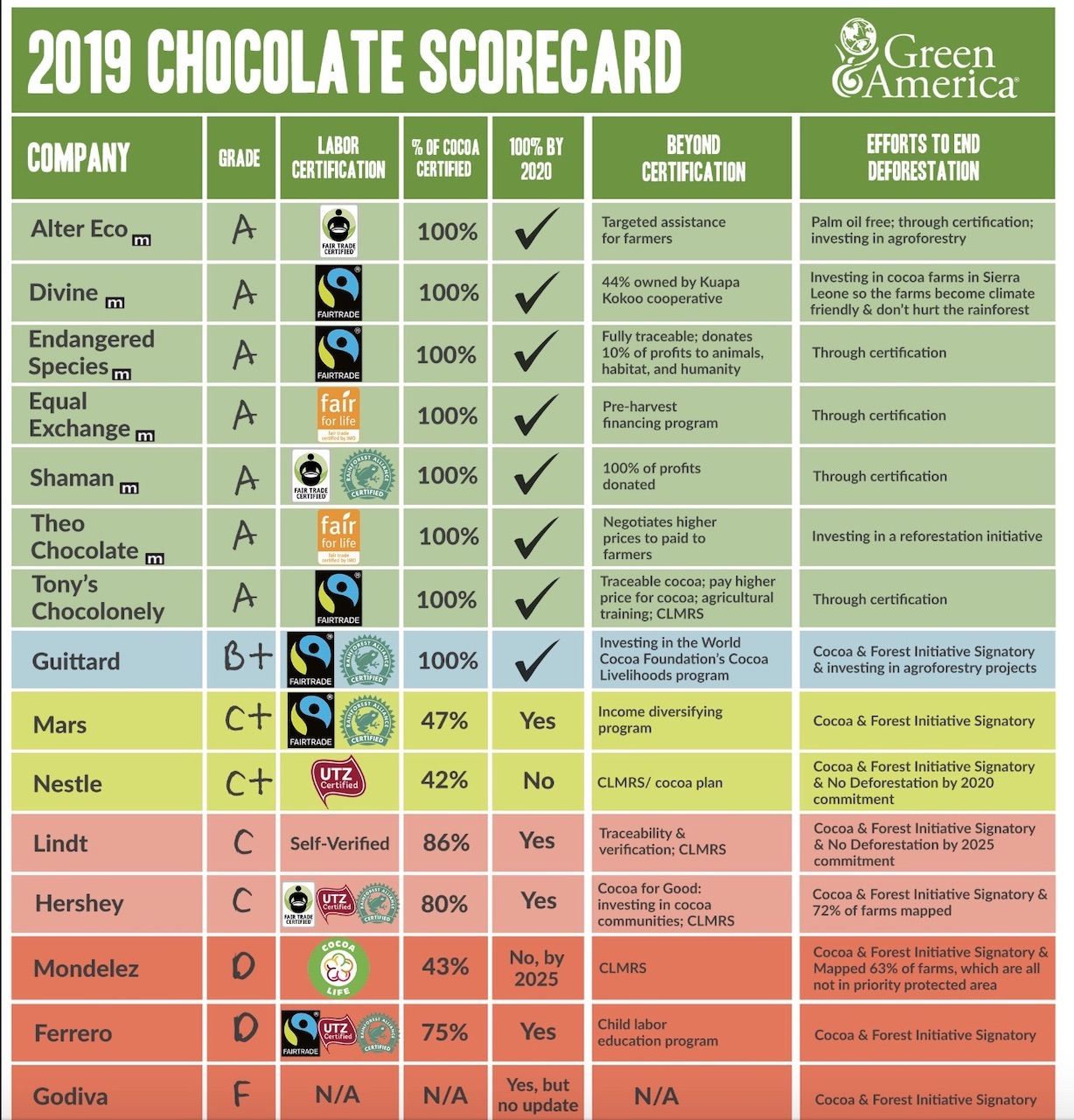You may think that when it comes to chocolate, there’s no such thing as a bad decision. But the chocolate brand you choose to support with your dollars matters a lot. According to the US Department of Labor, over two million children in Ghana and Cote d’Ivoire work in hazardous conditions growing cocoa and make less than $1 per day; some are even considered child slaves and are imprisoned on cocoa farms, according to the BBC. Responsibly consuming chocolate doesn’t just mean stopping when you’re full — it means being aware of which chocolate companies are adhering to ethical labor and sustainability standards and which aren’t.


How to Tell if Your Chocolate Was Made With Child Labor
What is fair-trade chocolate
Companies like Hershey, Nestle, and Mars — which account for 35 percent of the world’s chocolate production, according to Grist — are rife with unethical business practices, including using child slave labor to harvest and produce chocolate and rampant “rainforest demolition,” which contributes to climate change. In places like Indonesia and Malaysia, rainforests are destroyed to make room for palm oil plantations, a practice that “releases tons of greenhouse gases and displaces indigenous peoples.”
The simplest solution to consuming ethical chocolate is to look for brands that label their candy “fair trade” or “organic,” though the latter alone won’t tell you anything about labor practices. You can be sure that fair-trade chocolate, on the other hand, is ethically sourced and produced. The label indicates that workers have been paid a fair wage, that the company in question is investing in the local communities surrounding the cacao farms, and it only engages in fair labor practices.
How to buy ethical chocolate

Photo: Green America
In addition to looking for the Fair Trade label, consumers should also look out for the Rainforest Alliance label, which indicates that the chocolate company is not just producing goods but simultaneously protecting the environment and wildlife while adhering to ethical labor practices.
According to Grist, you should also look for chocolate with a single source because it cuts down on the supply chain between cacao farm, supplier, and consumer. In particular, look for chocolate bars that are labeled “bean to bar.” More expense does sometimes indicate higher quality: A chocolate bar with a hefty price tag (more than $7) “accounts for the labor, shipment, and processing of the beans.”
Another tool you can use when you’re buying fair trade chocolate is the Green America scorecard, which helps consumers determine which chocolate companies value good working conditions. The card evaluates companies based on their environmental, social justice, and human rights practices, as well as their attention to child labor issues and organic certifications.
As you can see from the card, companies like Alter Eco, Divine, and Theo Chocolate rank highly for their labor certifications, charitable donations, reforestation investments, and worker wages. Companies like Mondelez and Nestle, however, earned far lower scores as ethical chocolate companies.
In Ghana and the Ivory Coast, 90 percent of forests have been lost, and this is largely thanks to the cocoa industry. This is why companies’ efforts to reduce deforestation is a major factor in boosting their score.
So this Valentine’s Day, instead of trying to decide between Godiva and Nestle, remember this scorecard reach for another brand.
A version of this article about ethical chocolate companies was previously published on October 18, 2019, and was updated on February 12, 2021, with more information.